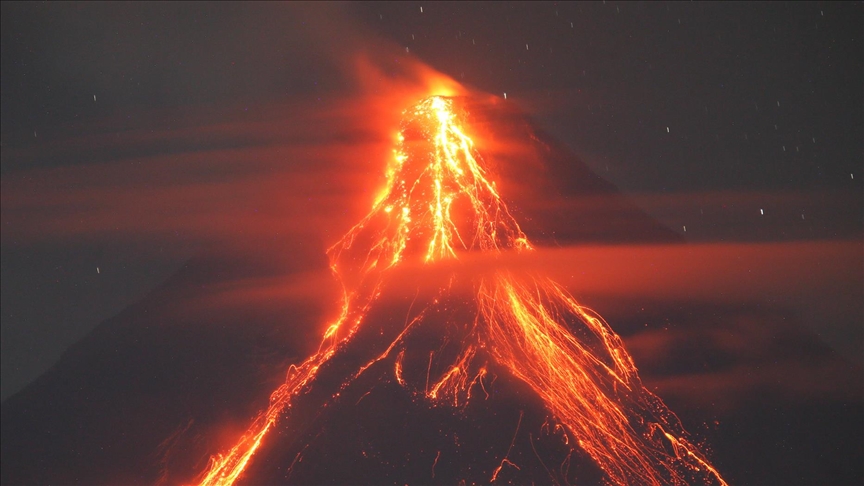Seismologists warn of ‘hazardous, explosive’ eruption of Philippines’ Mayon volcano
ANKARA
The Philippines national seismology agency said it cannot rule out the possibility of Mayon volcano’s “hazardous and explosive” eruption as it continues to spew lava and sulfuric gas.
Dr. Teresito Bacolcol, chief of the Philippine Institute of Volcanology and Seismology (Phivolcs), said that these activities reflect “what is happening on the vent,” local English daily Manila Times reported on Sunday.
At least three volcanic earthquakes and 11 pyroclastic density currents (PDCs), according to Bacolcol, were recorded from 5 a.m. on June 17 to 5 a.m. (local time) on Sunday.
So far, the current parameters are still reflecting on what is happening, the effusive eruption, but the possibility of an explosive eruption is still there, he warned.
“The lava flows have advanced to maximum lengths of 1,500 meters (1.5 kilometers) from the summit crater while collapse debris has deposited to 3,300 meters (3.3 kilometers) from the crater,” the newspaper quoted a report from the Mayon Volcano Network.
Continuous moderate degassing from the summit crater produced steam-laden plumes that rose 100 meters (328 feet), it added.
Phivolc said Alert Level 3 remains, which means that the angry volcano is in a high level of unrest and a hazardous eruption is possible.
Mount Mayon, the picturesque yet most active volcano in the Philippines, began spewing lava last Sunday.
Thousands of people have been relocated to evacuation centers in Albay province in the northeast peninsula of Bicol, over the past week as lava flows and volcanic earthquakes continue.
Volcanologists in the Southeast Asian country raised Mayon to alert level three on a scale of five, signifying a “relatively high level of unrest as magma is at the crater and a warning of the increased possibility of a hazardous eruption within weeks or even days.”
Anadolu Agency website contains only a portion of the news stories offered to subscribers in the AA News Broadcasting System (HAS), and in summarized form. Please contact us for subscription options.



